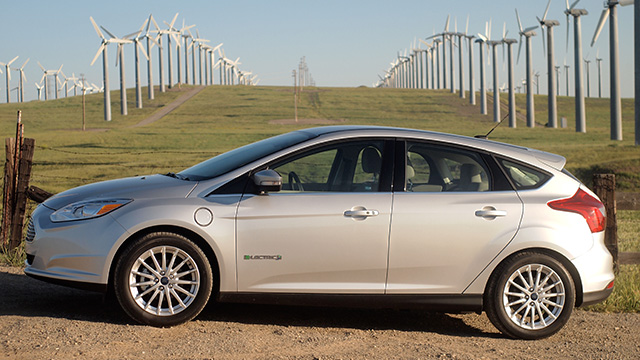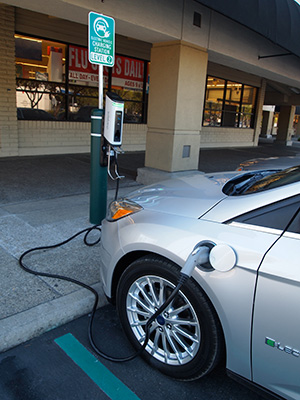
The all-electric Nissan Leaf first went on sale in December 2010. Until a couple of weeks ago, the Leaf had been the only EV available to U.S. consumers from a major automaker. That changed in mid-May when, according to a report by Reuters, Ford started shipping the 2012 Focus Electric to dealers. At last, car shoppers are able to compare the design and features of competing relatively affordable all-electric models.
Ford reported its very first month of sales of the Focus Electric: six units in May 2012.
Before the car hit the market, in late April, I was able to spend a full week with the 2012 Ford Focus Electric—plenty of time to compare the first Detroit-made EV of the 21st century with the 2011 Nissan Leaf that serves as my usual daily ride. I was on assignment for The New York Times. As I wrote in the paper, the most immediately striking difference between the two cars is how they look. While the Leaf exudes a Japanese gizmo aesthetic, the Focus Electric looks just like a regular Focus, which happens to be quite handsome. Ford wanted to make the Focus Electric as familiar and accessible as possible for mainstream car buyers.

Both cars have the telltale driving characteristics of an electric car: smooth, silent and brisk acceleration. I love that. The EV driving experience is so much better, that it makes driving a gas-powered car, even a hybrid, feel a lot less satisfying.
The Leaf has more passenger and cargo space than the Focus Electric. But looking back at my week with the Focus EV, there’s one compelling feature that’s lacking in the Leaf. The battery-powered Focus uses a 6.6-kilowatt onboard charger, while the Leaf carries a charger rated at 3.3 kilowatts. In functional terms, that means the Focus Electric adds about 20 miles of range for every hour that it’s hooked up to a 220v charger, while the Leaf only adds 10 miles of range per hour of charging.
